If you’re looking for persuasive copywriting techniques you can try…
You’re in the right place.
In this post, I’ll share 17 of the best copywriting techniques you can use to boost your bottom line today … even if you’re not a good writer.
So, if you’re looking to turn your browsers into buyers—without being too salesy—read on…
1. Tell Stories
“As far back as I can remember, I always wanted to be a gangster…”
“I was 12 going on 13 the first time I saw a dead human being…”
“People are always asking me if I know Tyler Durden…”
If you’re a cinephile, you’ll recognize all of the above quotes. They’re memorable lines from movies that have cemented their place in the film-going public’s consciousness.
Movies like the above are memorable—and oftentimes, meaningful—not because of their ability to entertain, although that’s a given. But rather, because of their capacity to move audiences, regardless of age, through the medium of storytelling.
A good marketer can learn a thing or two from Hollywood.
Take, men’s shaving brand, Harry’s, for example.
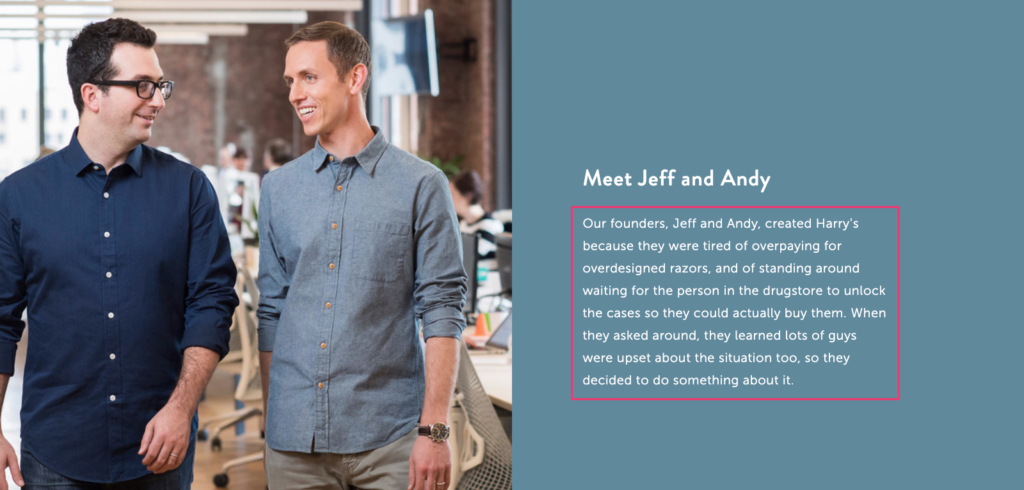
At one time, everyone knew razor blades were too expensive and overdesigned. Yet few if any companies had the courage to acknowledge it and take the market leaders head-on…
Until Harry’s came along.
Not only did they arrive in the marketplace and agree with what everyone was saying, but they lobbied for better, more ergonomic razors at affordable prices.
Like a biblical fable, it was a story that buyers could get behind: Harry’s David to Gillette’s Goliath, fighting for the everyman. And despite growing to unanticipated heights in recent years, Harry’s has continued to remain true to their status of “welcomed prophet.”
Storytelling is important when considering positioning, but it’s equally important when writing good product descriptions.
ThinkGeek, a retailer that caters to “geek culture,” often combines storytelling with pop culture references in their product descriptions to engage potential buyers.
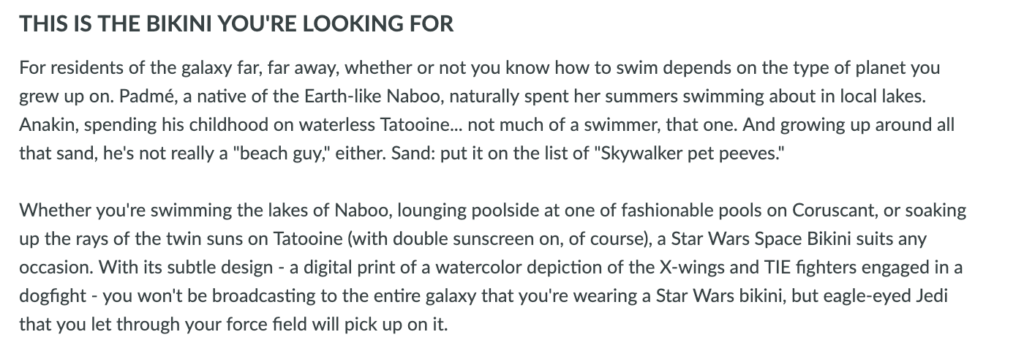
Writing product descriptions like the above requires a LOT of time. And it’s not recommended if you’re selling commodities. But if you’re not, and what you’re offering is unique, it might be worth trying for your best-selling products.
If you’re looking to get better at telling stories, check out Rikke’s post on how we sell through story-based emails. It’s a great place to start.
2. Appeal to Emotions
Read enough ads written by copywriter Joe Sugarman and you’ll notice something interesting.
Often, near the end of his ads, Sugarman would write something to the effect of, “If you aren’t absolutely satisfied, return your product within 30 days for a prompt and courteous refund.” (Italics mine.)
At first glance, it reads like a normal satisfaction guarantee. And if you thought that, you would be right in doing so. But in reality, he was doing more than that…
He was engaging the buyer’s emotions.
Here’s how Sugarman describes the strategy in his book, The Adweek Copywriting Handbook,
The emotion or the feel of that phrase really says that we are a very respectful and understanding company that will return your money very promptly. With very few words, I conveyed the feeling of being a concerned company that acts promptly … even though the phrase makes no logical sense.
The takeaway, then, is when writing copy, it’s important to remember to sell on emotion, but justify with logic.
And as we’ll explore throughout the remainder of the article, many of the strategies are built on that fundamental premise.
3. Direct Mental Movies
You experience reality through your five senses—taste, sight, touch, smell, and sound.
It doesn’t matter whether you’re reliving a favorite memory—like walking on a beach—or imaging a future desire—like eating a hot fudge sundae—our senses render that experience.
It’s no surprise, then, that savvy marketers often try to create images and even movies inside the buyer’s mind to trigger—and heighten—certain senses when selling their goods and services.
One of my favorite examples of creating, “mental movies”, as Drew Eric Whitman calls them, is British chocolate brand Thorntons.

They know that taste is everything when it comes to chocolate. So they add descriptive adjectives to their copy to cause the reader to salivate at the thought of savoring their chocolate.
Bottom line?
Telling stories, as we’ve already learned, engages readers. Telling emotional stories engages readers on a deeper level. Telling emotional stories that trigger a sensory response? An absolute gamechanger.
4. Speak Your Buyer’s Language
A powerful, yet often-overlooked copywriting principle is writing like you talk.
But if you really want to connect with readers, you need to write like they talk.
And it makes sense: If you’re not joining the conversation already occurring in the buyer’s mind, how are they expected to relate to and buy from you?
One brand that illustrates the art of writing for a specific audience is Barkbox.
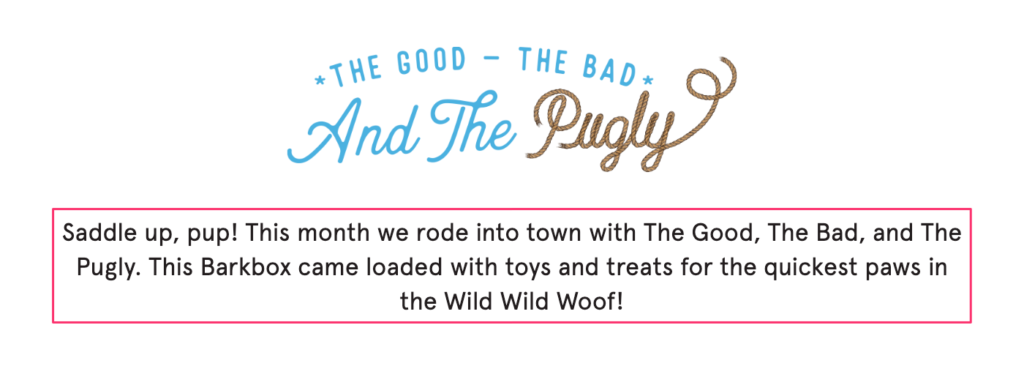
Much like the above ThinkGeek example, Barkbox uses phrases like “Barkbox is like the joy of a million belly scratches,” and “When your dog falls in ruv with something from the box” to connect with potential buyers.
And judging from their growth, year over year, it works like a treat. (Sorry, I couldn’t resist.)
One of my favorite ways of getting inside a buyer’s mind is browsing Reddit.
First, go to Reddit.
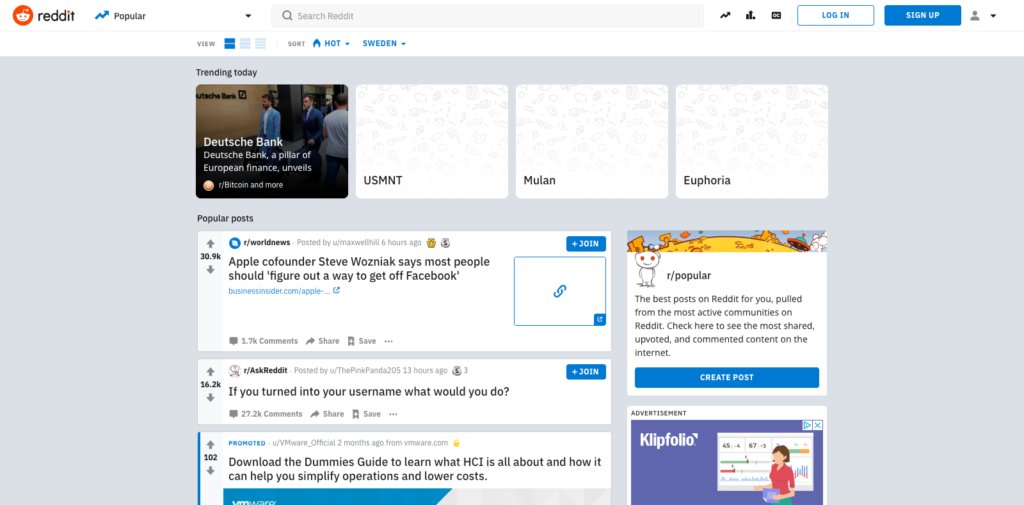
Then, in the search field, type in a relevant keyword (e.g. “bodybuilding”).
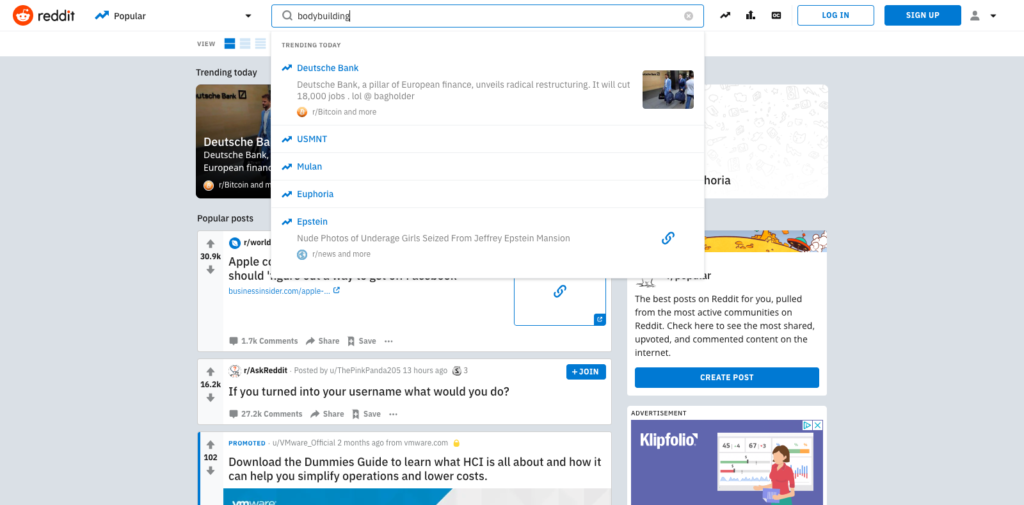
Next, choose a relevant subreddit. There’s a lot to choose from, but in this example, I’ll choose r/gainit as it’s quite active (258k members).
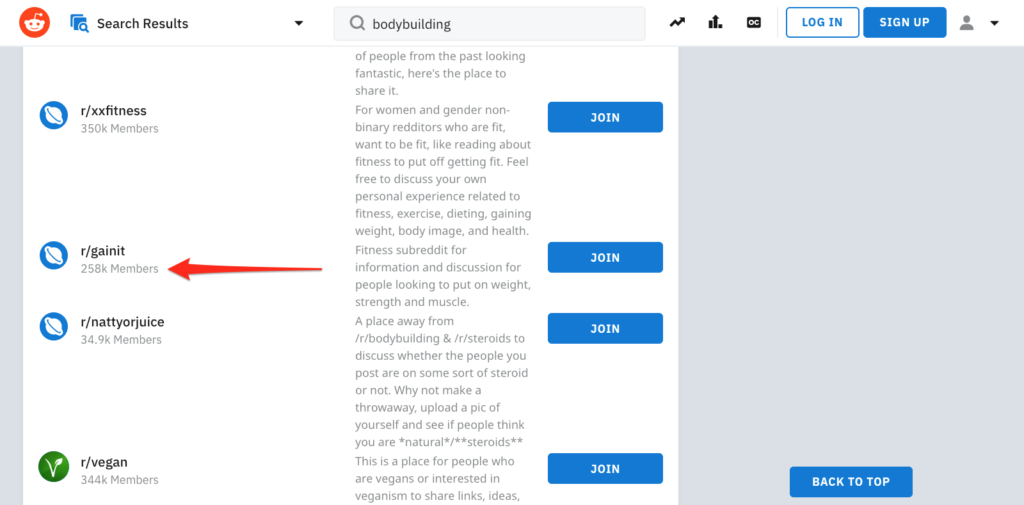
Then, look at the phrases Redditors use in their posts. In the example below, the author uses phrases like “hypertrophy” and “progression” to explain how he gained 31 pounds.
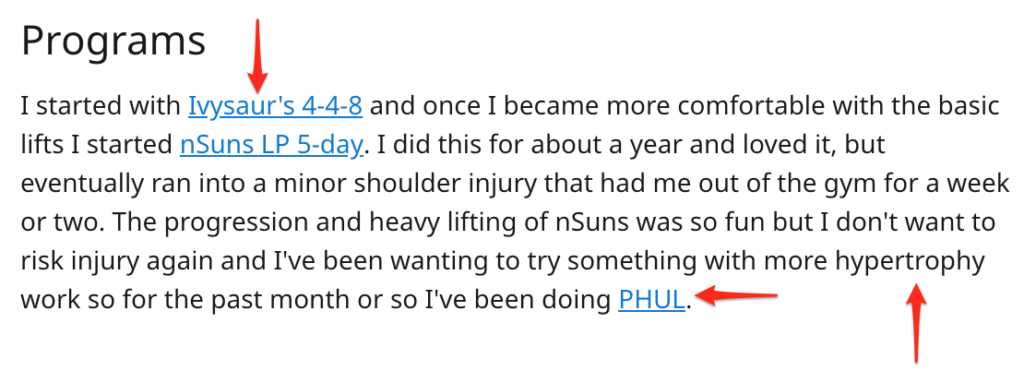
Using phrases that your ideal buyers use will build familiarity, and with any luck, increase the chances that they’ll buy from you.
5. Convey Authority
If you’ve read Robert Cialdini’s highly-influential book, Influence, you know that authority is one of six “weapons of influence.”
Leveraging it correctly, though, varies depending on the marketplace you’re in and the marketing channel you’re using.
If you’re in the health and fitness industry, for instance—a marketplace rife with charlatans—you might be wondering, “How can I show expertise when my buyer has been taken advantage of countless times before?”
One way, if you’re a brand like Ritual, is to combine multiple sources of authority. On their product pages, Ritual introduce the doctors they consulted with during the creation of their products.

And if that’s not enough, they also include the badges of major media outlets that have covered them like The New York Times and Health.

Granted, you won’t always have or need to rely on people with letters after their name, but in industries with incredulous buyers, it might help.
6. Appeal to Ego
In the above-mentioned book, Cashvertising, Drew Eric Whitman outlines eight biological desires we all have.
One of the eight desires, “Being superior, winning, keeping up with the Joneses,” involves positioning your products and services for buyers who want the best of everything.
Whitman writes,
Appealing to people’s vanity and ego is most successful when it hones in on characteristics that society considers being desirable, such as physical attractiveness, intelligence, economic success, and sexual prowess.
That might mean inviting buyers to differentiate themselves from others as Happy Socks do in their email marketing.

Or, like leather-goods maker, Bellroy, naming a product that appeals to a certain market segment (e.g. affluent business professionals):

We all have an ego and your buyers are no exception. Do with that information what you may.
7. Use Triggers
“A trigger,” writes Joe Sugarman in his book, Triggers, “is a tool for influencing, motivating and persuading a prospect to make a purchase.”
There are 30 triggers, in total, and while each deserves an article of their own, there’s one trigger I want to focus on in particular: exclusivity.
“To be the owner of something that few others can own is one of the strong human motivations,” writes Sugarman. The goal, he explains, is to make the buyer feel special. And there’s no better way to do that than offering products with limited availability.
One of my favorite brands that use the exclusivity trigger in their marketing is MeUndies.
A large portion of their revenue comes from their membership subscription. But where they differentiate themselves from their competitors is by offering monthly designer prints.
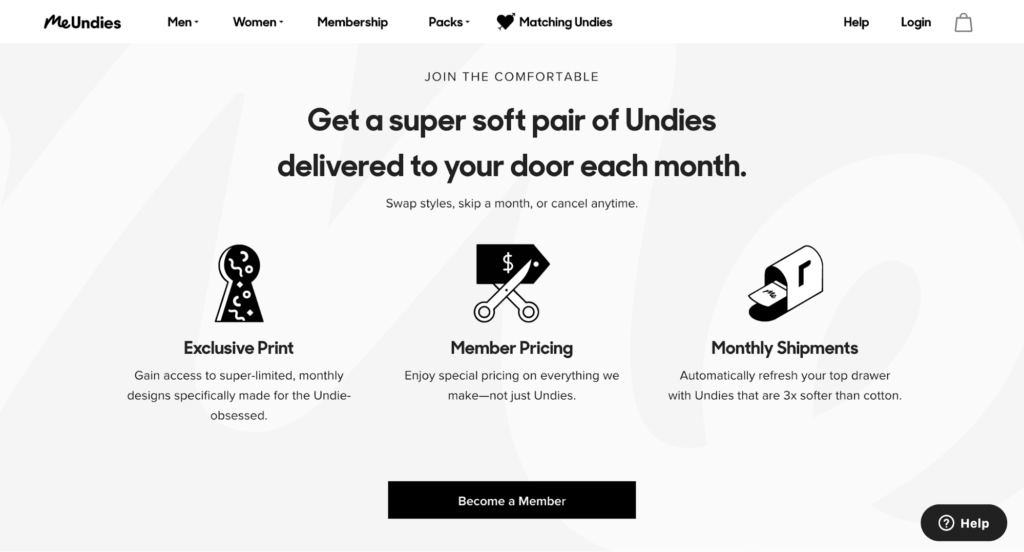
The best part is, while they’re exclusive, they’re also limited, meaning once they’re gone, they’re gone. And it’s something die-hard fans can’t resist getting their hands on.
8. Use Humor to Be Memorable
So far, we learned that telling stories is persuasive. And making readers feel emotions—especially positive emotions—and linking those emotions to your offer, is equally important.
But what about humor? Does making a reader laugh increase the chances that they’ll buy from you?
Not always. But you are more likely to stay top of mind, longer, and with little chance of getting knocked off by a competitor. And in today’s crowded marketplace, that’s better than nothing.
In one study, subjects were able to recall nouns found in bizarre sentences such as “The dog rode the bicycle down the street” rather the nouns from the common counterpart “The dog chased the bicycle down the street.”
So, if you’re in a noisy marketplace, making prospects laugh might be the fastest way to their wallets.
Poo-Pourri is my favorite example of a brand using humor in their marketing.
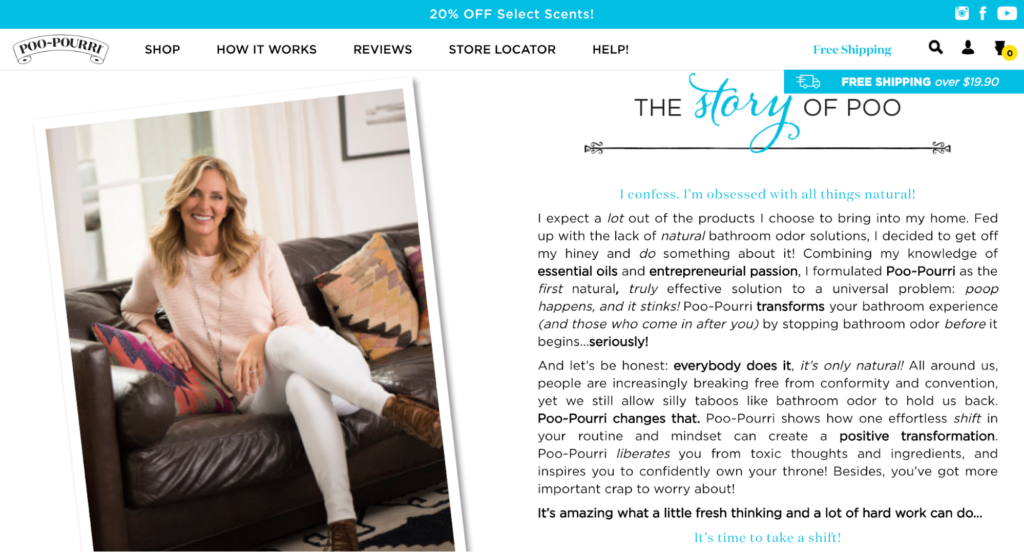
From their about page to their email campaigns, Poo-Pourri uses a unique blend of humor and salesmanship to get people talking about their products.
And with coverage in outlets like Adweek, it’s easy to see that, while juvenile at times, they’re doing something right.
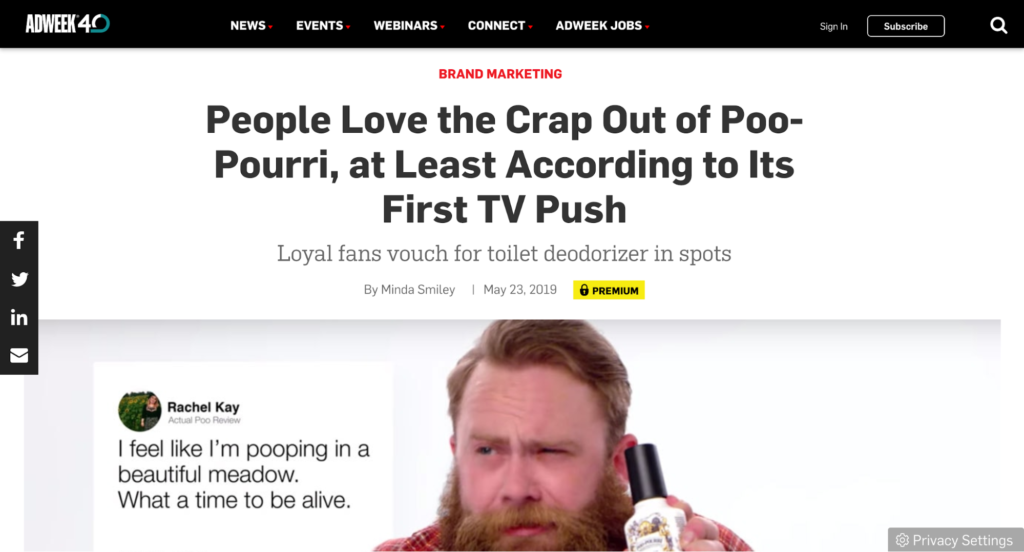
9. Master Copy Fundamentals
With the average attention span of only 12 seconds, it’s more important than ever that your copy jumps off the page and grabs the reader by the throat. (Dramatic, I know, but I had to get your attention, right?)
While the words you choose play a big role in holding a reader’s attention, so, too, does the way you accessorize those words.
What I mean here, specifically, is adding bolding for emphasis and paragraphs for readability.
Take the following product descriptions, for example. Which are you more likely to read?
A wall of copy:

Or, a carefully-copyedited product description with bolding and paragraphs like this example from Firebox?

The answer is obvious, isn’t it?
Adding bolding and paragraphs to your copy won’t make a big difference to orders overnight, especially if you’re starting out. But it will boost a reader’s on-page dwell time. And that’s one advantage more than you had before.
10. Focus on Benefits Over Features
Writing a benefit for each product feature might sound like common knowledge…
…but that doesn’t mean it’s common practice.
A refresher:
A feature describes what a product is; a suitcase with a built-in front nylon pocket. A benefit, by contrast, describes what a product gives you; quick-access to essentials like boarding passes.
(A value, if you want to go one step further, if what the benefit gives you; a feeling of superiority, etc.)
While it’s easy to assume features and benefits are reserved only for technical products, they also work great for simpler, high-end products.
Take mattresses, for example.
Few people know the difference between memory foam or spring mattress. And those that do, can’t always explain why one out-benefits the other.
That’s why brands like Herman Miller ensure that each feature (“visco-plastic memory foam”) has a benefit (“keeps you isolated from vibrations and movement”) and a value (“allows for natural rest”) to remove friction from a potential buyer’s decision making.

A good rule of thumb I learned from copywriter Andy Maslen is, for every line of copy that you think is a benefit, ask yourself, “Is the reader likely to say, ‘so what?’ after reading it?” If so, it’s not a benefit and needs improvement.
11. Use Fascinations
Mel Martin is the greatest copywriter you’ve never heard of.
Unlike his contemporaries that relied on and overused “how to” bullets in their ads, Martin quickly made a name for himself due to his distinctive bullet writing style.
One bullet, or fascination as it would become known, was “What Never to Eat on an Airplane.”
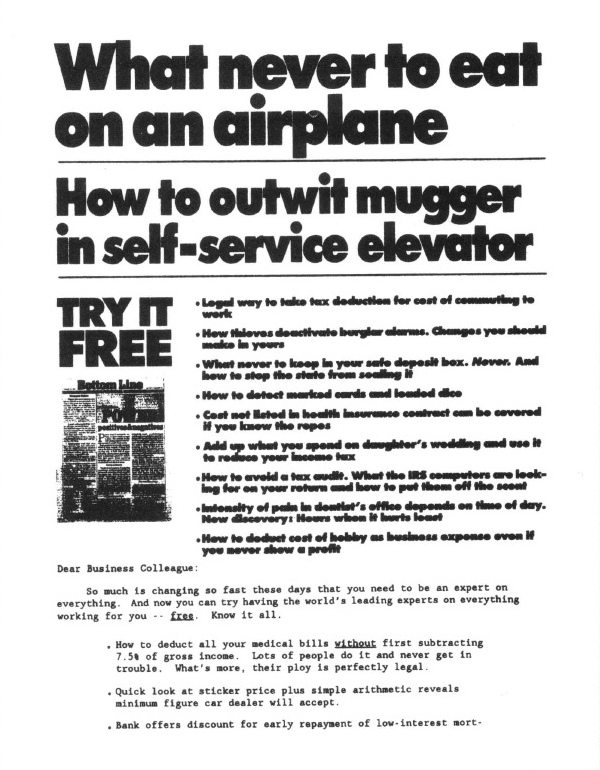
Buyers couldn’t help but make a purchase to learn more. And Martin made Boardroom, the company he worked for, millions of dollars in revenue.
Going beyond feature/benefit bullet points, fascinations go one step further and open an information gap, urging readers to buy to satisfy their curiosity.
Here’s a great example from Digital Marketer. Notice how each fascination subtly draws you in, enticing you to learn more.
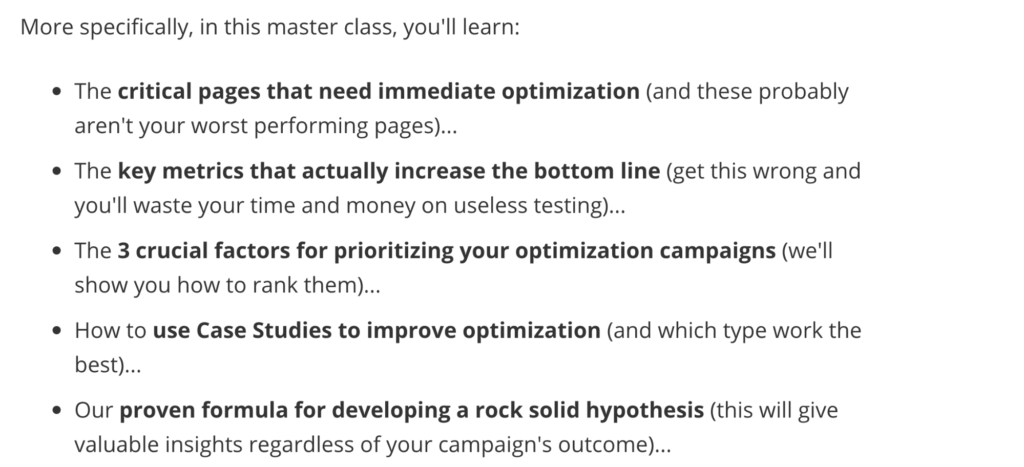
Writing good fascinations is one of the hardest copywriting skills to master. But if you begin adding them to your marketing materials, particularly your sales pages, your revenue will skyrocket.
12. Use Framing
Did you know that you react to information differently depending on how it’s presented to you?
In one study, subjects were more likely to choose a medical program if it was framed positively.
That might sound obvious, but it’s a lot more deceptive than you think, especially when it’s unexpected—like on a pricing page.
Take Blue Apron, for instance.
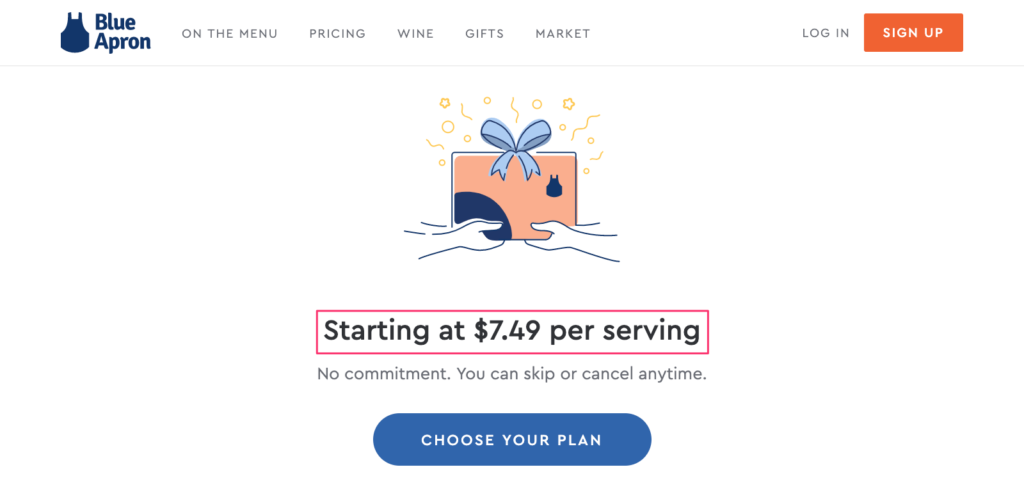
Rather than frame their offer as serving per monthly, like their competitors, Blue Apron frame it as serving per daily to help potential buyers relate to the cost more easily.
And it makes sense: few people think of meals in terms of their monthly cost. But if you’re like most people and you’re thinking of ordering food in, then cost is top of mind, front and center, every time.
Consider how you’re framing key information like pricing. Oftentimes, it’s enough to nudge potential buyers and impact on-page conversions.
13. Sell the Scare
I wrote earlier about “the Life Force 8,” from the book Cashvertising. Specifically, the biological desire of wanting to be superior, winning or keeping up with the Joneses.
Another biological desire I want to mention here is the need for freedom from fear, pain, and danger.
“Your goal is not to create new fears,” writes Whitman, “but to tap into existing fears, either those on the forefront of consumers’ minds or those that require a little digging to uncover.”
One fear that plagues endless people—particularly those who have experienced it or know of others that have—is the fear of being a victim of a crime.
The home security industry knows this better than anyone. And it’s exactly why brands like Protect America reference it in their copy
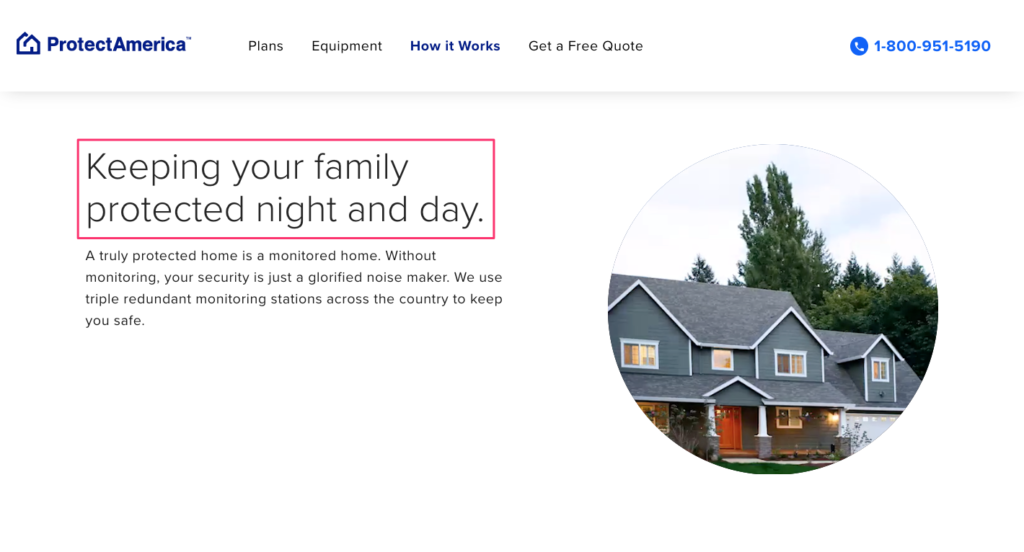
“Selling the scare,” as Whitman calls it isn’t for every business. And chances are it might not be for yours. But if it is, and you’re not taking advantage of it already, it might be worth playing on the fears that loom at the forefront of your buyers’ minds.
14. Use an Involvement Device
Using an involvement device is my all-time favorite persuasive copywriting technique.
And it’s a piece of cake to take advantage of online.
Don’t believe me?
Click here.
If you clicked the above, you just “involved” yourself with my article…
And if I were selling to you, that innocent act would have turned you from a passive reader into an active prospect.
Sugarman, whom I introduced earlier, famously included typos in an ad selling—wait for it—a spell checker. Why? To get the reader involved. For each typo the reader found and mailed in, they got 2$ off the product.
Genius.
You don’t have to use a popup campaign as I did. But if you’re looking to grow your list, or offer a discount, it’s not a bad place to start.
15. Let Your Buyers Sell for You
I’ve already talked about one of Cialdini’s “weapons of influence,” authority. Now, I want to share another familiar favorite, but with a twist.
Every marketing blog under the sun has written about the importance of social proof. And we’re no exception. In fact, we’ve written about it before (here and here).
So, to avoid repeating myself, I want to show you one brand is using an updated version of it in the digital age.
Fabletics is an online retailer that offers “Affordable, high quality and stylish workout clothes for women.”
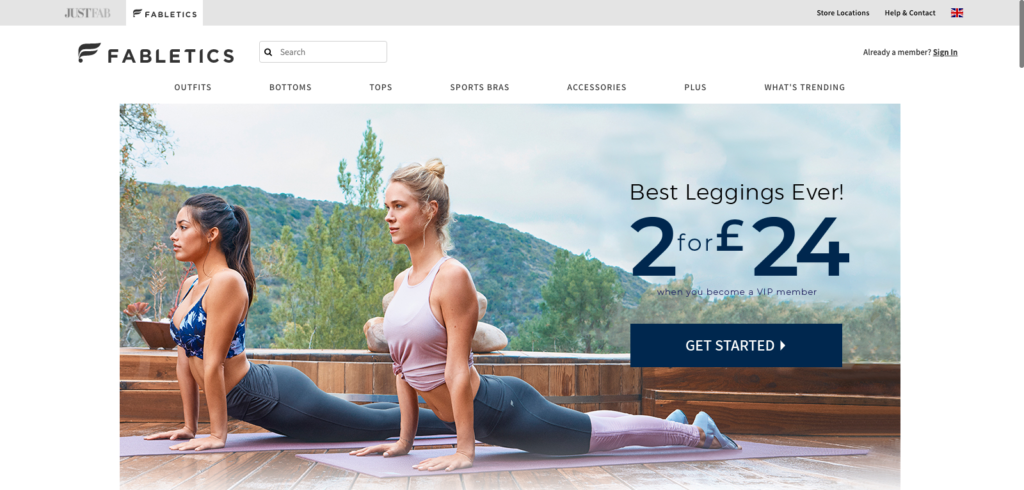
However, rather than sharing customer reviews on their product pages—like their competitors are doing—they repurpose their customer’s Instagram posts on their homepage.
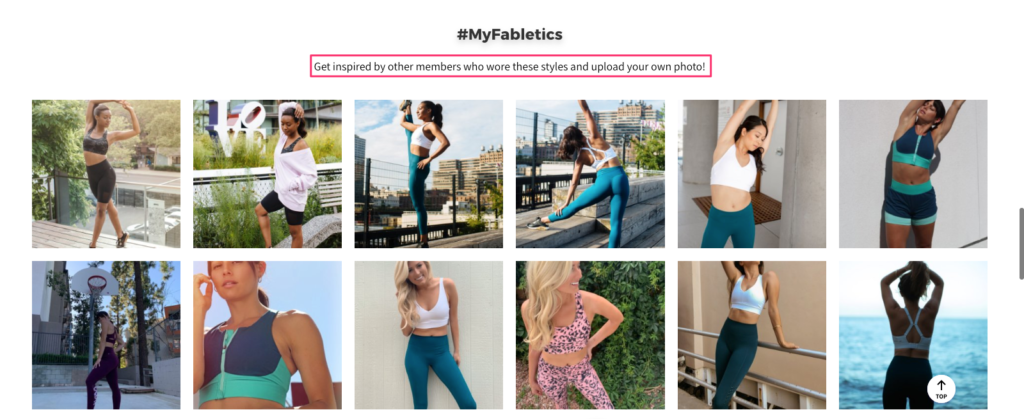
Not only that, but they continually add more social proof by inviting new customers to submit images of their own:
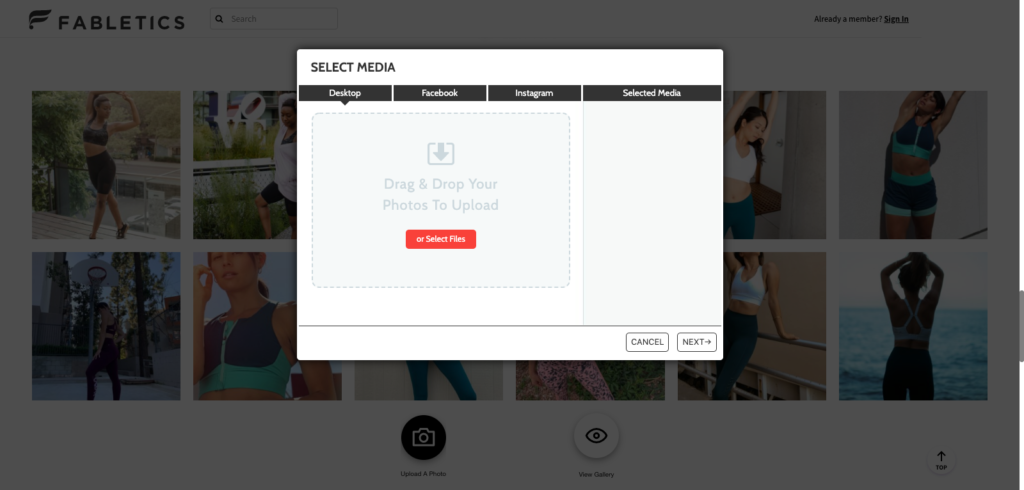
Embedding customers’ tweets and Instagram posts is a great way to add legitimacy to a product’s value, and for time-strapped e-tailers, it’s never been easier to take advantage of.
16. Use Power Words
Power words, according to copywriter Jon Marrow, are “persuasive, emotional words that trigger a positive or negative response.”
He continues,
They can make us feel scared, encouraged, aroused, angry, greedy, safe, or curious. Authors, copywriters, and content marketers use “power words” to spice up their content and compel audiences to take action.
My favorite power words to use when nudging a reader to take action are “best,” “new,” and “now.”
And I’m not the only one.
Look at the below email my colleague, Seray, got recently:
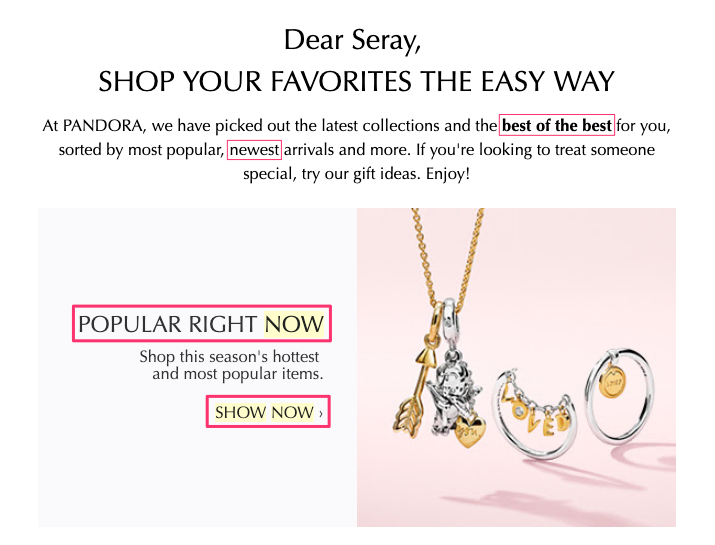
Pandora knows that people want the newest and best of everything, regardless of price. And they want it now.
So if you’ve got a new product, and you know that it’s the best on the market, tell your buyers—and give them a reason to get it immediately.
17. Raise (and Resolve) Objections
No matter what you’re selling or who you’re selling to…
Not everyone will buy from you.
That’s a given. And it’s a reality you can’t change, despite what marketers will have you believe. But for those who will buy from you, there are certain objections—pricing, shipping, etc.—that prevent them from moving forward and making a purchase.
I’ve written about objection handling before in the form of using reverse testimonials—having a customer address an objection they had, in their testimonial, and overcoming it for you. That’s one way to do it.
An easier approach, though, is raising and resolving concerns on a frequently asked questions (FAQ) page.
I recently found a great example from Orabrush, who addresses a common objection to buying their product:
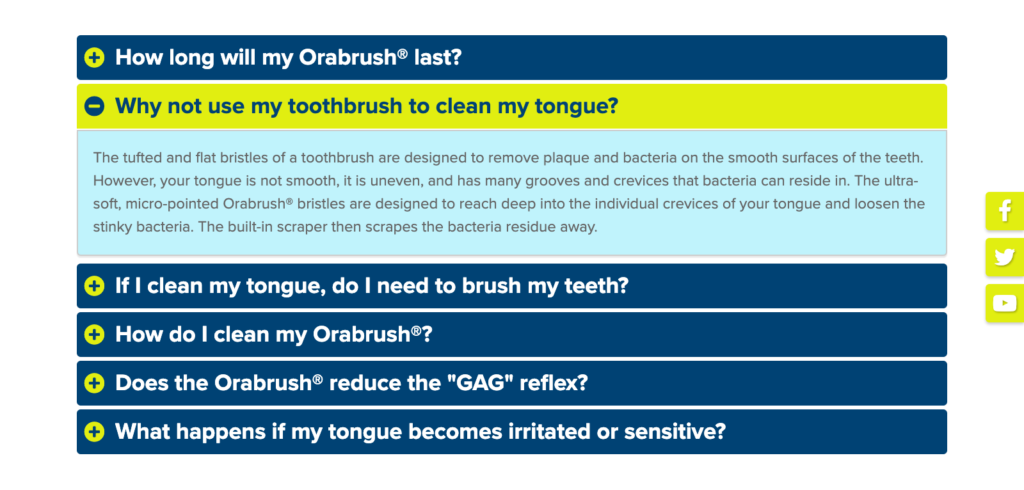
Avoid mistaking an FAQ page as a nicety; it’s a necessity when it comes to raising and resolving buyer objections. And it’s one you can’t afford to not have.
Conclusion
Learning how to influence potential buyers through persuasive copy is an essential marketing skill. Without it, you rely on nothing but a product’s merit. And that’s rarely enough to get the sale.
But with a little practice, and a few, if not all, of the above strategies, you can transform your sales pages into an invisible salesperson that sells more of your products and services without your involvement.



